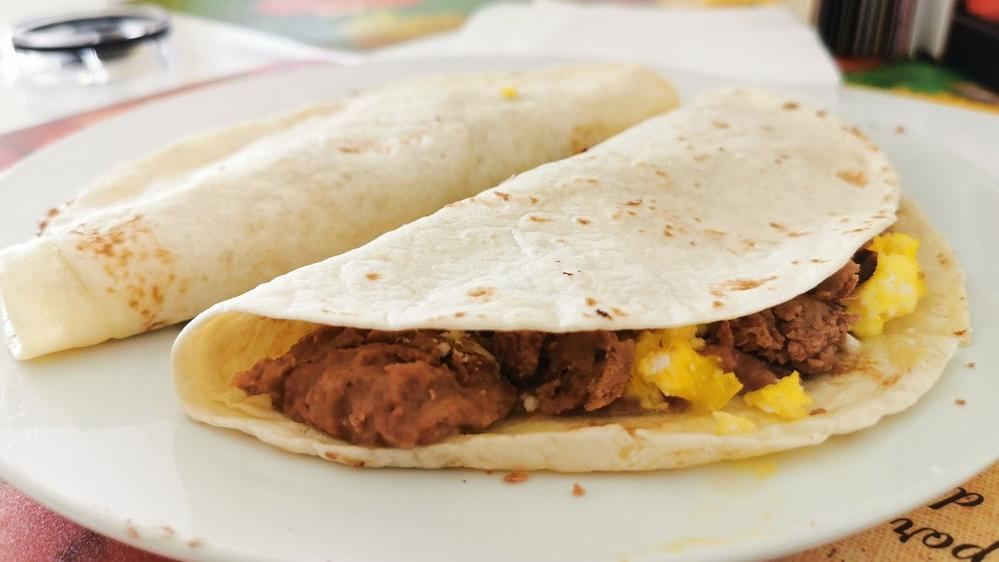The Best Street Food In Honduras Began With Dock Workers
The beloved baleada embodies the culture and cuisine of the Bay Islands.
The first thing that stands out about Roatán, and all the other surrounding islands off the coast of Honduras, is the glistening barrier reef. It's the second largest in the world, and when I dipped into the crystalline water during a trip to the marine preserve of Cayos Cochinos, there were so many rainbow-colored fish floating near the surface that I didn't need a snorkel to see them—the archetypal image of paradise.
But the Bay Islands (Islas De Bahía) aren't just about the beaches. I navigated through dense rainforest in the bustling port city of La Ceiba and rappelled down three roaring waterfalls, an experience as thrilling and astounding as it sounds. After climbing down waterfalls with the streams pounding my face, I hiked through the jungle and saw parrots, iguanas, and a sleeping sloth curled up on the branch of a mahogany tree, all just a few miles from a lively city of 200,000 people.
I trekked to Punta Gorda, the oldest permanent settlement on Roatán, for a taste of Garifuna cuisine. The Garifuna are Afro-Indigenous people who migrated from the Caribbean island of St. Vincent during the 18th century. Garifuna food plays a significant role in Honduran culture (just as it does in Belizean culture), so I was eager to sample it.
Walking into Yuramei restaurant, the flags of St Vincent and Honduras, as well as the black-and-gold Garifuna flag, adorned the entrance. The building overlooks a beach where Garifuna fishermen catch fish with hand-woven nets in keeping with centuries-old traditions. Fresh caught bonito and snapper appeared in the flavorful sopa de pescado, a fish soup with coconut milk, pepper, onions, and yucca that's scooped up with mashed plantains.
Fish is also served whole on the Bay Islands, with plates of rice and peas. Our meal was topped off with a shot glass of gifiti, a bracing rum concoction that contains dozens of different herbs, roots, and seeds. It's a medicinal and recreational bitters drink, one that people believe can increase libido and even prevent disease. It burned a trail down my throat to my lungs and certainly felt like it was killing any foreign substance it encountered along the way, so maybe there's something to it.
Back in La Ceiba, my favorite meal was a serving of thick pupusas, grilled corn cakes filled with cheese, pork, or beans and topped with curtido de repollo, a tangy pickled cabbage mixed with vinegar, carrots, and red chiles. And only my shellfish allergy could prevent me from tasting the popular sopa de caracol, a conch soup that appeared on most menus in the city. Not to worry, my friendly guide Alex assured me. The most beloved Honduran dish has nothing to do with shellfish.
I had heard about baleadas each and every time I asked about classic Honduran food, but I hadn't yet ascertained what they were. I quickly learned that baleadas are a beloved street food consisting of a warm wheat tortilla folded and stuffed with refried beans, cheese, and crema. From there, you can choose to add chorizo, avocado, eggs, or chicken. It's a street food breakfast staple, but cafes and restaurants also serve them at any time of the day; the dish was created in La Ceiba as a quick meal for dock workers. Legend has it that the lady selling them was struck by stray bullets from bank robbers. She survived to sell the food the next day, and people started calling the dish la baleada, which translates to "the lady who was shot."
I ordered my baleada with scrambled eggs and avocado and sprinkled it with the local hot sauce. Although it sounds like a taco or a wrap, it didn't taste like either one; the thin grilled flour tortilla brought the cheese and crema together into a sauce that bound everything else together. The hot sauce added a kick to the rich ingredients, and bowls of curtido, or cabbage slaw, sat on the table for another optional layer of flavor and texture.
I slathered the pickled concoction into the tortilla, and that was it. The taste was comforting and thrilling at the same time: a zesty, savory sensation. As I started in on my second one, I realized that the baleada's simplicity masks the complexity of its flavors. Much like the beauty of the Islas De Bahía, which might look from a distance like a calm beach but teems with life as soon as you step in from the shore.
